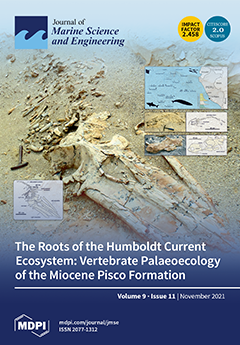Little is known about the seasonal dynamic of archaeal communities and their potential ecological functions in temperate seagrass ecosystems. In this study, seasonal changes in diversity, community structure, and potential metabolic functions of benthic archaea in surface sediments of two seagrass meadows along
[...] Read more.
Little is known about the seasonal dynamic of archaeal communities and their potential ecological functions in temperate seagrass ecosystems. In this study, seasonal changes in diversity, community structure, and potential metabolic functions of benthic archaea in surface sediments of two seagrass meadows along the northern Bohai Sea in China were investigated using Miseq sequencing of the 16S rRNA gene and Tax4Fun2 functional prediction. Overall,
Crenarchaeota (mainly Bathy-15, Bathy-8, and Bathy-6) dominated, followed by
Thermoplasmatota,
Asgardarchaeota, and
Halobacterota, in terms of alpha diversities and relative abundance. Significant seasonal changes in the entire archaeal community structure were observed. The major phyla
Methanobacteria,
Nitrosopumilales, and genus
Methanolobus had higher proportions in spring, while MBG-D and
Bathyarchaeota were more abundant in summer and autumn, respectively. Alpha diversities (Shannon and Simpson) were the highest in summer and the lowest in autumn (ANOVA test,
p < 0.05). Salinity, total organic carbon, and total organic nitrogen were the most significant factors influencing the entire archaeal community. Higher cellulose and hemicellulose degradation potentials occurred in summer, while methane metabolism potentials were higher in winter. This study indicated that season had strong effects in modulating benthic archaeal diversity and functional potentials in the temperate seagrass ecosystems.
Full article





